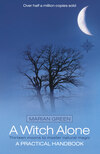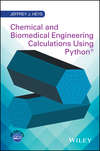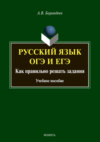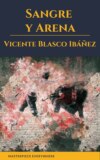Kitabı oku: «A Witch Alone», sayfa 3
It is these Mysteries, that of the dying, sacrificed God and the undying, changing Goddess, which form the foundation of pagan worship. The seasonal festivals act out the life cycles of these First Parents, their magical birth, growth, wooing, loving, fulfilment and departure to the Underworld, beyond our knowledge.
Although each changes, both the God and Goddess of the witches are immanent; they can be approached for prayer or consolation, for guidance or for healing. It is through this very personal interrelationship that true paganism is expressed. You will come to see whichever aspects of these Old Ones you most need to help you. By regularly seeking them out in the silent places of your heart and in the natural places of the world, you will get to know them as if they were friends, parents, lovers, teachers, healers or wise old guides throughout your life. Because they are above all agents of change, how you see them, in dreams, meditations and rituals, will reflect what you expect to see. Their substance is not of this world, immutable and fixed, but a plastic, astral substance which can appear in many shapes or characteristics. If you ask to see them as they are, perhaps you will see only light, or feel power, or fire – only you can discover that. It is because they have many attributes, evolved through humanity’s long childhood, and many faces, names, associations and powers that it is important to consider the concept expressed by Dion Fortune, that All Gods are One God, and all Goddesses are One Goddess, and there is One Initiator.’ She is only echoing earlier words put into the mouth of Isis by Apuleius, writing 1800 years before.
This multiplicity of deities can seem confusing to some people, unless the foregoing is taken into consideration. You are dealing with a variety of aspects, personified by people as many gods and goddesses, but just as the Roman Catholics have many saints, all being credited with their own life stories, martyrdoms and specialities, so did the earlier pagans see their own deities. Underlying both traditions is the concept of a Creator or, to the magical folk, an Initiator, by whose power those lesser, more tangible and approachable saints, gods or angelic beings come into existence.
Most pagans do not reject the concept of a creative or generative force, shining as light through the beings of the gods and goddesses, but comprehend it as something beyond, something too ephemeral to define. You will find references to ‘Illumination’ or ‘Enlightenment’, ‘Seeing the Light’, and the ecstasy of ‘At-Onement’ or ‘Unity with All Creation’ which occurs during mystical experiences. This is an altogether higher experience than those commonly undergone during rituals, although such work can lead very ordinary people to have some extraordinary visions and inner awakenings, even if such transcendental happenings are not sought or expected.
Here is a fictional character’s response to encountering one of the aspects of the Lord of the Wild, taken from what some people might think is a strange source, a children’s story book, The Wind in the Willows by Kenneth Grahame. Some of the animal characters are looking for the otter’s child and are led to an island:
In silence they landed, and pushed through the blossom and scented herbage…till they stood on a little lawn of marvellous green, set round with Nature’s own orchard trees – crab apple, wild cherry and sloe. ‘This is the place of my song-dream, the place the music played to me,’ whispered the Rat, as if in a trance, ‘Here in this holy place, here if anywhere, surely we shall find Him!’
Then suddenly the Mole felt a great Awe fall upon him…it was no panic terror – indeed he felt wonderfully at peace and happy – but it was an awe that smote and held him…And still there was silence in the populous bird-haunted branches;…and still the light grew and grew…The summons seemed still dominant and imperious. He might not refuse were Death himself waiting to strike him instantly, once he had looked on things…rightly kept hidden. Trembling he obeyed…and then in that utter clearness of the imminent dawn, whist Nature flushed with incredible colour…he looked in the eyes of the Friend and Helper; he saw the backward sweep of the curved horns, gleaming in the growing daylight; saw the stern, hooked nose between the kindly eyes that were looking down on them humorously, while the bearded mouth broke into a half-smile at the corners; saw the rippling muscles on the arm that lay across the broad chest, the long supple hand still holding the pan-pipes only just fallen away from the still parted lips; saw the splendid curves of the shaggy limbs disposed in majestic ease on the sward; saw, last of all, nestling between his very hooves,…the little round form of the baby otter…
Then the two animals, crouching to the earth, bowed their heads and did worship.
Sudden and magnificent, the sun’s golden disc showed itself over the horizon, and the first rays, shooting across the level water meadows, dazzled them. When they were able to look once more, the Vision had vanished, and the air was full of the carol of birds that hailed the dawn.
The whole passage, from the chapter ‘Piper at the Gates of Dawn’, is well worth reading thoroughly and its symbolism and powerful images used for meditation. Similarly beautiful invocations of Pan are to be found in the magical invocations of Aleister Crowley, the pagan poems of Doreen Valiente and in the novels of Dion Fortune, especially The Goatfoot God. You will need to seek out those depictions, invocations and images which most closely call to your inner vision the form of the Great God of Nature, the Lord of the Wild or the Horned Hunter, antler-crowned, who leads his mysterious pack of hounds across the sky, harbinger of storms or tempests.
These are not tame powers, however; neither God nor Goddess needs to be seen in the same context as gentle Jesus, meek and mild. Doreen Valiente conjures up the experience in the words of part of her poem, Invocation to the Horned God:
Come, O come, to the heartbeat’s drum!
Come to us who gather below, When the broad white moon is climbing slow,
Through the stars to the heaven’s height. We hear thy hooves on the wind of night!
As black tree branches shake and sigh, By joy and terror we know thee nigh.
We speak the spell thy power unlocks, At solstice, sabbat and equinox,
Word of virtue, the veil to rend, From primal dawn to the wide world’s end.
It is the combined feeling of excitement and sacredness which shows to neo-pagans that their God and Goddess are in some way present in rituals or in the celebration of festivals, many of which enact their life story. The ideas which you may explore for their validity for yourself include the most widely accepted concepts about the Mighty Ones. First, you need to consider the multiplicity of their natures, both Male and Female, Mother and Father, Immanent and yet Holy. You need to be aware that many pagans accept the idea of a Creative Spirit, Initiator, First Emanation from the void. You also need to be aware that the principle of reincarnation is common among pagans and witches, who hold that every living creature has an immortal spirit which, evolving as it goes, lives through many lives.
Some of the themes of meditations and self-explorations may well lead you to recall your previous lives, in other ‘selves’, and the knowledge you had then, the relationships and long-lasting bonds of love or hate which re-emerge in this life to bring joy or pain. Within this concept of eternal and evolutionary life is the concept of karma, an Eastern term meaning not just ‘fate’ or ‘destiny’ but an interlinked chain of action and response in our human affairs. It is not a simple ‘knock for knock’ arrangement tying two parties into continuing conflict, but a theory which suggests that good actions will lead to pleasure and those which are harmful, to yourself or others, will hold you back by limiting your freedom. Each action you make in the world affects the entire universe. If your action is basically evolutionary, you will move a fraction forward; if it prevents evolution, then you will suffer the consequences. It is for this reason that the skills of real magic are only bestowed, by the Goddess, on these who can handle the power with care.
Love, honour, respect and personal responsibility are among the watchwords of most successful witches and magicians. You have to learn that even to offer healing, unasked, can be a harmful act, for it interferes with the life pattern of another human being. If someone is ‘miraculously healed’ without learning from the experience, it will have to be repeated, and if you tried to heal them, then perhaps you will suffer some illness. Most of the traditional sorts of spells the old witches were asked for were those to make people fall in love with the witch’s client, or to break up marriages, or grant power to those who were not ready to handle it. Today most of those sorts of requests would be met with a long counselling session, perhaps using a form of divination to help the client sort out his or her own love life. To win love you have to deserve it by being a lovable person – there is no other way!
Spells and magic will not lead to power or riches or fame unless the one who seeks such rewards is ready and capable of handling these, and all of them have their price. To be powerful, in any field, means that you are also controlled and responsible, sensible and caring. To have wealth implies that you have earned it, not stolen or conned it out of its rightful owner. There are many things which witches possess which are incredibly valuable, yet have no monetary price, nor can they be bought or stolen. These include peace of mind; harmony and joy in their relationships, both earthly and with the gods; success in their chosen fields of life, perhaps without the added burden of fame; a wisdom and inner knowledge which will answer most of life’s problems, and an enduring patience which will see them through the rough patches. Most of the ordinary standards by which success is measured do not apply, but you can see by the light in their eyes rather than the money in the bank how well they are doing in the Game of Life!
Although covens do have High Priestesses and High Priests who may well have progressed through stages and degrees set by their Tradition, the direct communion with the Old Ones will make all sincere seekers into their own priesthood. Having a qualification of some sort has not always been a necessity to this sacred calling. The oracles are chosen by the Goddess, who speaks through them, but without diminishing their awareness or entrancing their minds, a very different concept to that of mediumship, or channelling, as it is sometimes called these days. Those who walk in the Old Ways may well find that in verse and ritual, in song and dance the Great Ones can indicate their will through those who are dedicated to their wisdom.
Another valuable task certainly carried out by witches of old, as they served their communities, was that called, in the Celtic Church, ‘Soul Friends’. These people, men and women, were respected for the way they lived their lives and would be freely consulted by anyone in trouble, of heart, mind or spirit. It was possible to discuss spiritual or emotional matters with them, in a lonely grove or quiet garden. There was no offering of forgiveness by an unsanctified priesthood, but gentle comfort, support or guidance. All these things have been sadly neglected in our hurried world. To be able to turn to a wise friend, whose views would be impartial yet caring could go a long way to easing the spiritual deprivation of our towns and cities. Soul Friends were companions of children, who might tell of rough treatment by their elders; or of single women deserted by their menfolk yet trying to rear children alone. They helped the elderly, slowly walking to the gates of death, yet comforted and guided by those wise in such matters. Perhaps the witches of the New Age will restore such a sacred calling to their repertoire, and be willing to listen and advise both pagans and others who seek such consolation.
You cannot be forced to believe anything, but you can allow your own inner being, your own eternal, reincarnating (if you accept it does) spirit to show you what is truth in the matter of religious action or faith. Seek to understand, rejecting nothing until you have really tried to comprehend. This goes just as much for aspects of the faith you may be trying to exchange for pagan philosophies and practices, for the seeds of much valuable learning may be hidden in holy books, as well as bigotry, nonsense and out-of-date ideas. Read for the poetry, the words in praise of deity, the actions of the satisfied heart and awakened spirit. Examine the words and works of any pagans or witches you come across. Would you really like to be like them, hold their world views, their attitudes, biases and concepts of deity, without bending your own truly held beliefs? No true religion will suppress debate, honest examination of its sacred texts, or discussion of its tenets by any seeker who is trying to understand. The more rules and restrictions, the more hollow the teaching and empty the lore. The witches hold one sentence as their Law: ‘An it harm none, do what ye will.’ ‘None’ in this case implies everyone and everything! ‘An’ in old English means ‘In order that’ and ‘will’ is your soul’s own true will, not the whim of the moment.
Another underlying principle of the paganism of witchcraft is the idea that every individual contains a spark of the Creator, manifested as both God and Goddess inside each of us. Those who take up the duties as a New Age priest or priestess will eventually learn, directly from those deities within, how to handle their powers, speak with their voices, bless with their benediction. It is not something which can be expressed in a book, but has to be learned patiently, by personal dedication and commitment to that path. It is not an easy option, either, for to serve the Creative Principle is a very hard, heavy and enduring task which, once taken up, cannot be set aside for human reasons. If you work through the exercises, make the effort required to attune yourself with the powers of Nature, interact with the God and Goddess as they may appear to you in dreams and visions then eventually their twin powers within you will awaken.
Some Traditions teach only of either the God or Goddess within, but in reality, because our immortal, reincarnating spirits may be either male or female, there dwells deep within the nature of both sexes. When this is awoken our understanding of relationships, friendships, love and passion is increased immeasurably. It is by working with the God and Goddess within that we may gain much of our magical power, and alongside that the will to control it and the responsibility to use it properly. If you look at the earlier part of this chapter, you will see which are the main attributes of the God and Goddess as they exist and are available to everyone, and then you may be able to choose those aspects which you most need to invoke in yourself, using your inner God/Goddess force to do this. Gradually you will learn the ancient art of symbolism and magic, wherein a certain sign, number, colour, tree or flower may represent that which you wish to contact, and by its ritual use, or even mental imagination, you will be able to ask clearly for specific help, and receive just that. The rituals and charms, the talismans and spells of the Old Ones were much less sophisticated than the ones some magically-minded witches use today. Both sorts work, but a return to the older, simpler and more natural methods will do no harm.
Exercises
You may already be encountering difficulties because you are choosing to redirect your life, and walk an uncommon path, but if you are really intent on walking the Old Way you will need to persevere.
Again, the second Moon requires you to carry on research as well as looking at what is going on in the community around you. Look at every tree you see, take every opportunity to witness or join in local well-dressing, bonfire processions or morris dances. They all contain hidden jewels of our forgotten pagan heritage. Also find time to be quiet every day, meditating if you know how, or at least mulling over what you have read, what you have written in your Book of Illumination, and all the ideas flitting like bats through your mind, by day and night.
Here are some more things to do in your second Moon of training. Consider what it means to have a Goddess and a God with many forms. Also read and think hard about religious experience, what it should do or may have done for you in the past. What would you consider a mystical experience to be like?
Divide one page of your Book of Illumination into two columns and write ‘The Goddess’ at the top of one column, and ‘The God’ at the top of the other. Begin by writing in each pairs of names, attributes, symbols or titles, matching the Goddess as Moon with the God as Sun, for example. Sometimes you have three Goddess attributes and only one God name, but you will gradually find balances. You should be able to continue this list through several pages, especially if you take some of the classical deities as well as the local ones.
Sit silently with your eyes closed, relax and then ask the Goddess to show herself to you. See what happens after a few minutes, and write it in your Book. On another occasion ask for the God to appear, and again record what you see or experience. Then ask to see them both.
Draw a large circle (round a plate) and enter the Festivals, taking the top to be north. In segments, add symbols, colours, flowers and all the other things you personally associate with each feast. If you don’t know very much yet, rather than copying from this book, add more after each festival passes.
Look at poetry, more or less at random, in bookshops or the library. Try to devise your own brief invocations for the elements that surround your circle. Work with the basic powers rather than elaborate god-names which you may not fully understand. Try to open up your emotions rather than treating this as an intellectual exercise.
Walk about out of doors and visit somewhere that you would consider sacred, be it religious site, highest local hilltop, ancient monument, old tree or spring of fresh water. Try to discover how and why it feels different to any similar ‘non-sacred’ place. Relax with your eyes closed and stretch your senses.
Here are a selection of books to look out for:
Robert Graves, The White Goddess (Faber)
Marian Green, A Harvest of Festivals (Longman, out of print)
Marian Green, Natural Witchcraft (Thorsons)
Miranda Green, The Gods of the Celts (Alan Sutton)
William James, Varieties of Religious Experience (Penguin)
Caitlín Matthews, The Elements of the Goddess (Element Books)
Don’t expect any of these books to be a very easy read, nor do any of them explain exactly about the work of Old Village Witch or Cunning Man because there is very little written about them, except as parts of learned studies by folklorists, but they are a treasure house of useful ideas.
THREE The Sacred Cycles
To every thing there is a season, and a time to every purpose under heaven: a time to be born, a time to die; a time to plant, and a time to reap; a time to kill, and a time to heal;…a time to weep, and a time to laugh; a time to mourn, and a time to dance;…a time to keep, and a time to cast away;…a time to keep silence, and a time to speak; a time to love, and a time to hate; a time of war, and a time of peace.
OLD TESTAMENT; Ecclesiastes 3
The land on which we live is subject to the cycles of the seasons. To our ancestors every part of the year had its tasks, its unrewarded efforts and its harvests, its times of dearth and glut, success and failure, plenty or famine. What happened to the crops or the fertility of the livestock was seen to be partly in the hands of the farmers with their inherited wisdom, and partly in the gift of the Earth Mother. It is for this reason that, from the earliest known religious activities of humankind upon Earth, offerings, rituals, celebrations and acts of propitiation seem to have been made in her name.
Most of the oldest identifiable religious objects appear to be in the form of fat women, usually described by archaeologists and others as primitive Earth Mother figures, or Mother Goddess statues. As the understanding of the varied nature of the Goddess evolved these became more elaborate, showing not just the fat belly and ample breasts, but beautiful headdresses, armlets which are sometimes snakes, flounced skirts or elegant necklaces and breast ornaments. All over the world such ancient representations are to be found, echoing the most advanced art forms of their age. Some are painted on cave walls or roofs, some are carved from soft stone, moulded in clay, woven from reeds, cast from precious metals and decorated with jewels. Each individually expresses the artist’s prayer, of thanksgiving or supplication, or worship of a specific aspect of the Great Goddess, as seen in his or her age.
Recent ideas about ancient structures, mounds, earthworks, ‘burial mounds’ and reshapings of the landscape seem to indicate that even on this vast scale, effigies of a Mother Goddess, Birth-Giver, Life-Taker, have been set out among the hills. Many of these artificial constructions seem to echo the shape of the womb, or the pregnant and fecund belly of she who brings forth young. Many of the shapes associated with the Goddess from earliest times include circles, holes, the ‘vesica piscis’, or the crescent of the moon’s shifting outline. Serpents and many flowers appear as symbols of the life force of the First Mother, and many springs, wells and fountains are sacred to her power.
Similarly, there are many upright pillar stones, phallic totem poles, carvings of the sun, or windows in structures where the rising light of the sun can send its fertilising ray deep into the dark heart of the Goddess-shaped long barrow, symbolically uniting the sky with the Earth. Here the God as the sunlight and the Goddess as the earthwork, at a very precise moment in the turning year, come together, magically ensuring fertility and the return of the spring. Many of the circles of standing stones have been found to align with specific sunrises or sunsets, or the appearance of the moon on the horizon. We have had to wait until computer graphics systems were developed before these ancient, mathematically accurate layouts of markers could be understood for what they teach us about the wisdom of our ancestors. Stones, ditches, mounds, cuts in the horizon, straight and curved trackways, canals and pools, all have been deliberately engineered by ancient priests or scientists, to act as accurate calendars or time markers.
Time’s passage was always of importance to early people. Stone Age bone carvings track the pattern of the moon’s face through the sky in its twenty-nine-day passage from new to new again. It is likely that first tall poles and then heavy stones were carefully set to show the relationship between the sun and the seasons. Even before the time when the sowing of seeds introduced the very beginnings of agriculture, the passing seasons provoked interest and perhaps wonder in the early peoples of Britain and Europe. Much scientific research has been centred on the calendar-like circles of stones, ignoring the fact that farmers then, as now, sowed seed when their own fields were dry and warm enough to allow them to flourish. Crops are harvested when they are ripe, or in order to save them from rough weather, not because some great stone sundial has marked out a particular day. Even the breeding of livestock has to be left to their own inclinations, when the ewes, cows or mares are receptive. A sunbeam falling on a particular spot in a sacred courtyard will not make the rams, stallions and bulls more willing. It might work in reverse, however; the farmers saw when their livestock mated and noted the time against these calendar-clocks, or recorded in some simple way where the sun rose when the soil was ready for sowing, or how the moon shone at harvest time.
This need for the organisation and activities of the people to follow the phases of Nature is largely overlooked now. Just as the monks of the early Church invented clocks and set fixed dates for their saints’ days, regulating the lives of all the people, so the modern witches often meet by the clock or the calendar instead of by the tides of the Earth Goddess and her Sky Lord. It is important to become aware of the actual phases of the moon, not by looking at a watch dial or printed poster on the wall, but by making the effort to go outside in the evening and look for the moon herself. It is worth rising early and seeing where and when the sun rises, for he too traces a different path along the horizon, from the north in summer to the south in winter.
If you are working alone, or with a friend or two, in the old manner, it will be easier for you to hold your celebration or meditation on the night of the new or full moon, at an equinox or solstice, or the first day after the snowdrops bloom in your winter garden.
Pre-Christian people in Europe worked out the passage of time in moon phases and because of this they probably had a moon-number of great festivals. The oldest seem to be the beginning of winter, the middle of winter and the end of winter. In summer they would probably be too busy to find time to gather and celebrate, working from dawn to dusk, hay making, weeding, tending livestock, shearing the sheep, then reaping the corn and stooking it, and carrying it into the barns and threshing out the grain. Then there would be the gathering of wild and cultivated fruits and vegetables and fungi to be stored for the ‘hungry gap’ of the winter. In autumn, the beasts would be brought in from the hills and woods and some slaughtered and salted down for the winter. Fat would be rendered both for eating and to burn as lamp oil. At each change of occupation it would be Nature herself who would instruct the people what to do. Gradually several overlapping patterns began to emerge, and it is from the cycles of the life of the land and the farm stock, and the magical lives of the Goddess and the God, that some of the festivals which are celebrated by modern pagans began to develop.
I think that if some of the witches of today thought more about the actual workings of Nature and less of book-bound, set knowledge, they would gain more power in their magics, more joy in their celebrations, and a greater sense of unity with their ancestors and the ancient faith they aim to follow. It was, after all, the Church that fixed the dates of the old Festivals, and it is from that restrictive form of belief that most of them are trying to untangle themselves! This is especially true at the end of the twentieth century, when it seems that great changes are occurring in our weather systems; spring is coming earlier in the south of Britain, with more winter rain, high winds and overflowing waterways.
Nature marked out the turning seasons with a series of alternating White and Green harvests, and it was from these that the original nine feasts came to be established. You don’t have to take my word for it, but look out of your window, observe and take note of those outdoor happenings which presage every change of season.
All over the world, the Goddess is seen or known as the White Goddess. White flowers, clothes or offerings have always been associated with her, from the snowy-white icefields of the north, to the white-hot burning deserts on the equator; to the southern lands, lying under the Long White Cloud. We see it today in the white dresses of brides at their marriage, when the young lady, for that day, represents the Goddess to her husband; in the white costumes, with their bells, ribbons and flowers, of the Morris Men, ‘Mary’s Men’, dancing in honour of the White Goddess. Even in India, a land where white is a colour of mourning, it is into the hands of the Goddess of Death, with her white face, that the departed soul will travel.
The White harvests represent stages in the lives of the Goddess and the God, defined at a moment when a certain kind of power was to be felt, and perhaps shared with the people. The ‘green’ festivals are set around the solar agricultural dates of the Equinoxes and Solstices. The old rites were simple and largely intuitive affairs, when a whole village or community would come together to act out part of the Old Ones’ story, to renew the bonds of dedication to the Lord and Lady, and those ties of kinship within the human relationships, or forge new ones. There was no priest to intercede between the people and their deities, for even in the pre-Christian Celtic era when the Druids held sway, they seemed to have acted more as guides or masters of ceremonies than controllers of the ritual. Everyone in the community probably made a small offering, asked a boon, or offered prayers of thanksgiving, as appropriate to the season. If there was speech, it was from the heart and Goddess-given inspiration rather than set-piece sermons or regulated supplications. As most such celebrations were carried out in fields or woods or sacred circles of standing stones, it is likely that much of the action was mime, just as today’s mumming plays enact the story of Life and Death, Summer and Winter, with a variety of local characters depicted. Song and dance too would have played a part in such gatherings, with music, drumming and probably the playing of games like those country children still play. Often those who acted out the characters of the story of the Old Ones would be chosen by lot, with symbols baked into a cake, or hidden in a bag. This allowed the God or Goddess to cast his or her part without the intervention of human will. When this method of choosing the parts for a ritual or celebration is used, those so chosen play their parts far better than might be imagined, even if they do not exactly fit the archetype they portray.
Ücretsiz ön izlemeyi tamamladınız.








